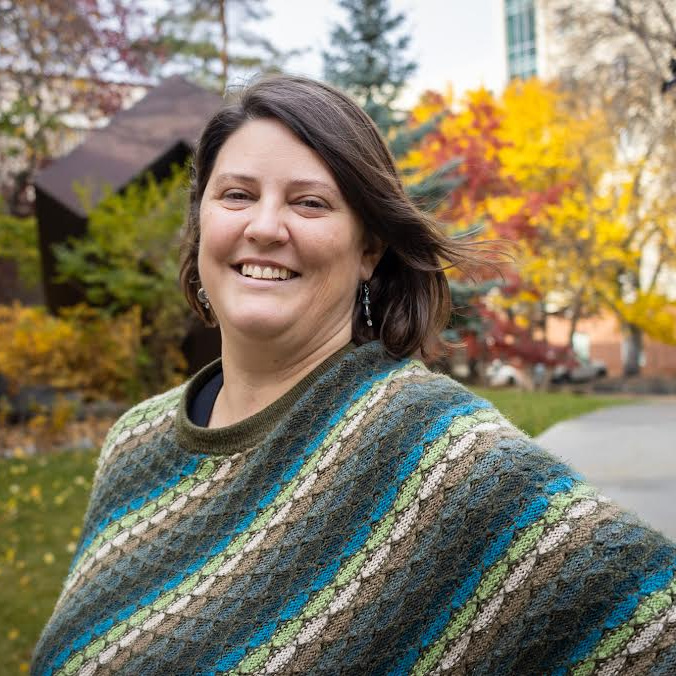Multilingual classrooms can benefit all students, researcher says
Scott Lingley - 31 October 2024

A multilingual classroom is one where all the languages spoken by the students are valued and used to enhance learning for everyone. It’s a learning environment Katie Brubacher sought to foster in her two decades as a teacher in both ESL and mainstream classrooms, and that informs her work as a language and literacy professor and researcher in the Faculty of Education.
“I loved classes with students with lots of different languages in them. The children were lovely and they brought so much to the classroom that they could share,” Brubacher says. “They often learn English quickly, they really flourish and do well, especially when they’re in environments where they feel a strong sense of belonging and care and support.”
Brubacher says the multilingual classroom is a shift away from deficit-based concepts of language learning, instead centring the knowledge, perspectives and identities students bring with them for the benefit of all the students. The ability to move fluidly between languages is known as translanguaging, as is the pedagogical approach to supporting this ability as a vehicle to learn English.
“Translanguaging is a piece that’s been researched extensively and the idea is we have a classroom full of children’s languages both orally and in reading and writing, and we’re continually seeing the children’s languages as an asset and not a problem,” Brubacher says.
“What that means is we have to shift how we approach teaching in our classrooms. We want to move away from English-only structures, so having books and resources available in multiple languages, which is easier now with the internet. It means centring children’s expertise and recognizing their languages in the classroom as a leadership opportunity for them to support each other.”
Brubacher admits the prospect of accommodating multiple languages in their classrooms, especially those they don’t speak, may be daunting for teachers who are not accustomed to working in the environment. But she warns that a one-size-fits-all approach to language learning and literacy tends to impact multilingual children disproportionately.
“I think teachers can be very overwhelmed by inclusion and getting used to inclusive practices in whatever mode, and feel anxiety around assessment and how to program for the children. So it’s just making the teacher feel comfortable — there are strategies you can use, you can work with this child — and often you find the children really excel,” she says.
“Something I see in my research is children way beyond their early years being subjected to these really decontextualized phonics programs that aren’t culturally responsive and connected to their own lives and experiences.”
Language learning and laughter
Having relocated from Toronto to join the U of A Faculty of Education, Brubacher currently is conducting research in Alberta schools with English language learners, some of whom are of refugee background. She says her approach is to engage these children as co-researchers, drawing on their experiences and knowledge to inform the direction of her work.
“A lot of the time these kids have been researched on — people are coming in and telling them what to do, ‘this what’s important to you’ — so I like the idea of continuing to hear what the children have to say and what their perspectives are on their own identities,” she says.
Brubacher is also interested in exploring the connection between laughter and language, as her work as a teacher and researcher has shown emotions are an important part of language learning and literacy.
“With the group of children that I work with, there’s concern that the children have experienced trauma and there’s a lot of concern around their mental health. Having a classroom with a lot of laughter and a sense of belonging and safety and inclusion is an important step for the children recovering from any trauma they’ve experienced — a space where children can express themselves in any language they want to, as opposed to creating an English-only space that really silences a lot of what they have to say,” Brubacher says.
“I’m interested in how we can create those spaces that are healthier for the children’s wellbeing and sense of belonging.”
Watch the video of Katie Brubacher's recent presentation on Alberta's multilingual classrooms.